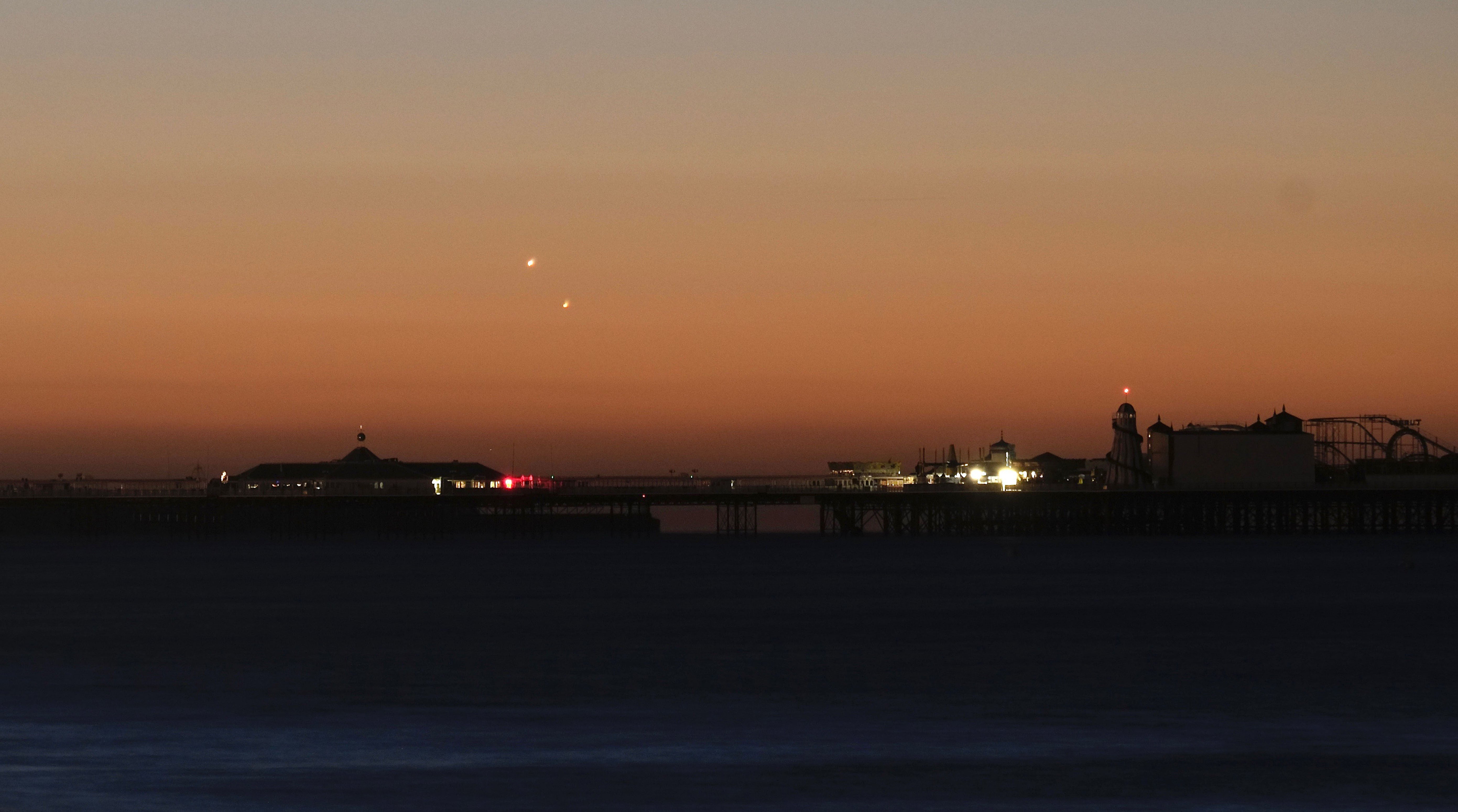Venus and Jupiter conjunction: Two planets to appear close to colliding
Venus will appear just 0.2 degrees south of Jupiter in closest meetup since 2016

Your support helps us to tell the story
From reproductive rights to climate change to Big Tech, The Independent is on the ground when the story is developing. Whether it's investigating the financials of Elon Musk's pro-Trump PAC or producing our latest documentary, 'The A Word', which shines a light on the American women fighting for reproductive rights, we know how important it is to parse out the facts from the messaging.
At such a critical moment in US history, we need reporters on the ground. Your donation allows us to keep sending journalists to speak to both sides of the story.
The Independent is trusted by Americans across the entire political spectrum. And unlike many other quality news outlets, we choose not to lock Americans out of our reporting and analysis with paywalls. We believe quality journalism should be available to everyone, paid for by those who can afford it.
Your support makes all the difference.The two brightest planets in the sky will appear as though they are almost colliding if you look up at the right moment this weekend.
Venus will appear just 0.2 degrees - less than a full moon diameter - south of Jupiter in its closest planetary conjunction, according to astronomy website EarthSky.
The planets will in reality still be millions of miles apart but from Earth they will appear as though they are almost touching or colliding.
Experts say early risers can catch the rare spectacle if they look east to the sunrise on the mornings of Saturday 30 April and Sunday 1 May.
The closest encounter is expected to take place at 7pm UTC (8pm BST) on Saturday before the planets begin creeping away from each other again the following day.
This will be the closest the two planets have appeared since August 2016, according to astronomy website Space, with the next meet up expected in March 2023.
Professor Lucie Green, a physics professor at University College London and chief stargazer at the Society for Popular Astronomy, told the BBC: “It’s very exciting for astronomers and it's a really great opportunity for people to get out and have a look.”
The scientist suggested finding a high spot and watching out for two dazzling bright spots very close together low down in the sky near the horizon.
“The planets will differ in their brightness,” she said. “Venus is brighter than Jupiter so it will look dazzlingly bright when you see it. Jupiter will be slightly fainter, about one-sixth of the brightness of Venus.”




Join our commenting forum
Join thought-provoking conversations, follow other Independent readers and see their replies
Comments